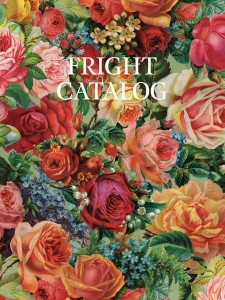 Fright Catalog
Fright Catalog
by Joseph Mosconi
Insert Blanc Press
100 pages / $24.99 Buy from Insert Blanc Press
Fright Catalog is a gorgeous, huge, glossy, expensive looking magazine. That makes it more fragile, more disposable than most books. I’ll probably put it on the wall when I’m done with this review. It’s also a work that you might carry around and show off. Or like something out of Borges, you might want to check in on the book to see if the words have mysteriously reshuffled into even more hideous koans.
Each page is a different visual/textual work, set in super large sans serif font centered on a brilliantly colored slightly glossy page. Mosconi is part of The Poetic Research Bureau, which “favors appropriations, impersonations, ‘compost’ poetries, belated conversations, unprintable jokes and doodles, ‘unoriginal’ literature, historical thefts and pastiche.“Based on that, you can imagine that the book is going to use some “mechanism” of unoriginality, in its creation, but the book itself doesn’t give it away. All you get is this:
“Each Stanza of Fright Catalog was fed through the search engine of an online Color Theme generator. A different color theme was determined for each stanza resulting in the color combination you see on each page of this book. Every color theme addresses your feelings and is employed for certain moral ends.”
A book like this doesn’t ask you to consider it as a project; it demands to be recognized as one. Sometimes that “chance” part of the project produces amusing/intuitive result (ie vampires get mentioned and you get a red/black color scheme) but it also hints that there is some other project going on with the text. Luckily, or unluckily, Craig Dworkin reveals the source of the text on the Insert Blanc site:
“Secrets, in these scenes, threaten to become singularities. Such, of course, is the reductio of all subcultures. And “Poetry,” for “Culture,” has become the ultimate and necessary subculture of them all. Fright Catalog is thus in part a dissertation on the sublime terror of the poetry scene today — with all its partisan scholasticism and stupid undergrounds (as Paul Mann would say). But this catalogue is also attuned to the poetic possibilities of subcultural discourse, to the phonemic tensions and narrative frissons that arise when metal lyrics are mashed up with phrases taken variously from online gaming dialogues, occult forums, and the secret language of adolescence (by definition: misunderstood; mardy; uncommunicative and inscrutable).”
That’s about half of the blurb. If you’re not keeping track of obscure metal from the past 20 years or so, then you might not notice that some of the more absurd (and startlingly beautiful) moments of this book are simply song titles. I think that the sublime terror can be read as a response to contemporary poetry, but sublime terror, a la Romanticism, or an inverted modernized terror/sublime, is also a major ingredient in metal and this work. Mosconi takes metal and other texts and distills something essential about terror and the sublime from them:
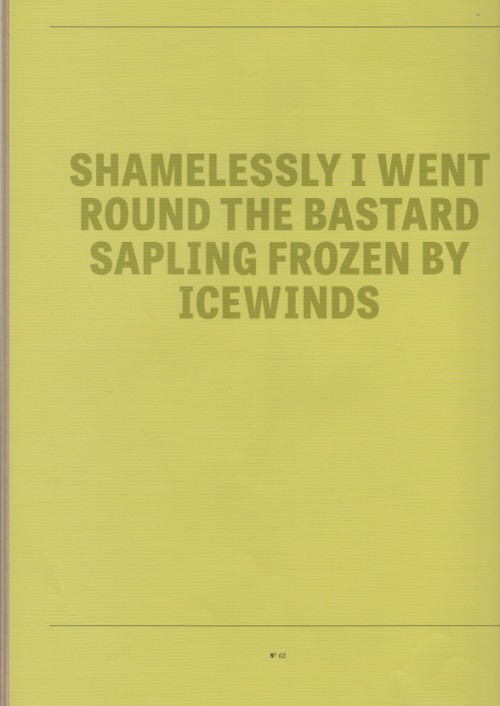
These poems dig out the voidish darkness that haunts metal, a chthonic, occult, ineffable thing. As the Poetic Research Bureau says, “’The beauty of second use’ rescues ‘what is direct and serious and heartfelt in previous art’ not as anachronism or sham pastiche, but as lived experience and vivid ideation.” Metal approaches the sublime through terror: outsized bitterness, intergalactic sorrow, anger, death, pain, and death. That’s not so much different from most romantic attempts to approach the sublime, but metal generally leaves out the enlightenment bit, and inverts the sublime terror – terror is the source of the sublime, rather than vice versa.
To generalize, instead of approaching the sublime as transcendent, a la Wordsworth, metal tends to locate the sublime in the impossibility of transcendence – the utter stuckness of being inside and a part of the world. In this way, I think this book has something in common with Joyelle McSweeney’s Necropastoral, and Timothy Morton’s smoking pool of death, which I wrote about briefly in this 25 Points on Percussion Grenade.
Another parallel that those two authors share with Metal & Mosconi is an interest in the non-human. “The Environment” takes on an interesting place: metal foregrounds the physicality of music through distortion, ambience. Fright Catalog does something similar due to a dissonance between the bright colors and the inevitably dark, occult, and repellent text. The gestalt of text/color/design adds up to an aesthetic “noise” — an ominous overtone. That plus absurd terrifying text produces an effect is exuberantly horrific:
WONDER THAT ON
MY ROTTEN CABIN
PONDERS A BAPTISM
IN THE WARM PISS
OF SLAUGHTERED
CHILDREN
In Fright Catalog the dissonance of content (text) v. form (design, color) also results in a low-level comedy, or a constant self-effacement re the absurdity of everything. The best metal also possesses this talent for taking itself, and it’s aims, and the project of apocalypse & doom very seriously, while providing space for black Kafkaesque humor.
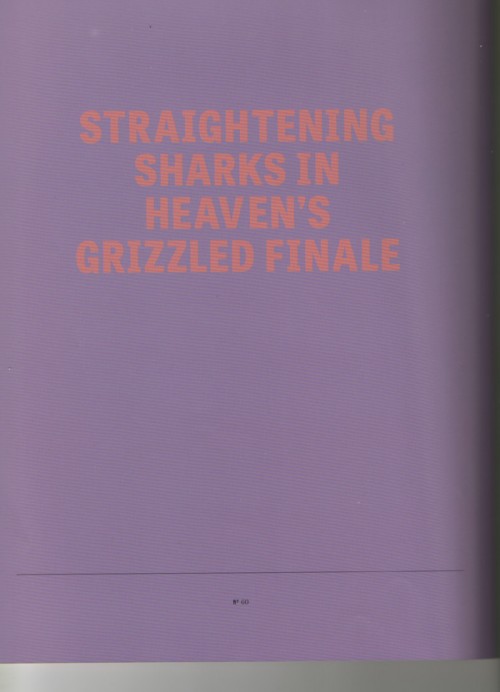
The mash up of song titles from Darkthrone and Benediction results in something new. It becomes more titanic and prescient – I can’t make any sense of Straightening Sharks in Heaven, but when it’s situated at the end of heaven, it’s grim and eschatological. For fun here’s the video of the Darkthrone song and the lyrics:
Some more with associated Googling:
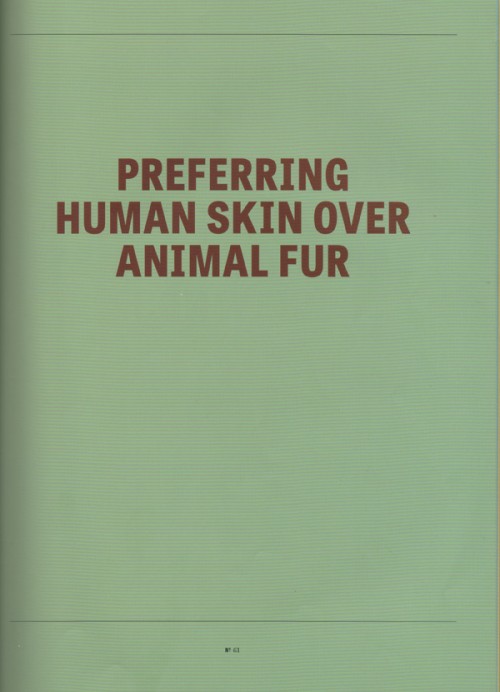
By Gnaw Their Tongues
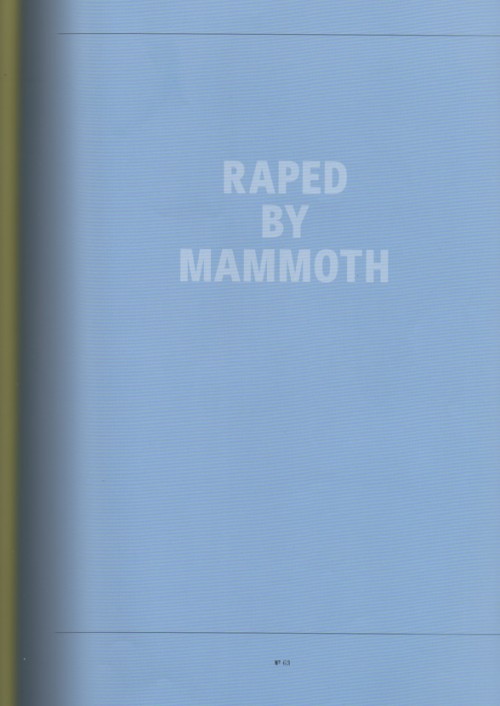
By Enbilulugugal
In a strange way, the language is cracked open — other authors have used similar strategies. This project belongs to the textual/visual lineage that runs from Baudrillard to Saroyan to image macros. There are some obvious superficial commonalities between Alt Lit and Steve Roggenbuck and Joseph Mosconi: use of large Helvetica, short “visual” influenced poems, a flippant comedy derived from absurdity / discourse confusion / unexpected juxtaposition.
Mosconi and The Poetic Research Bureau also obviously share in the tradition of appropriation/constraint/conceptualism that sees its natural and annoying apotheosis in the printing of the internet by Kenny Goldsmith. I wonder if the effort to locate this work in a tradition is what Dworkin sees as the “sublime terror” of metastasizing genres, cliques, schools, and clubs.
Both Fright Catalog and metal refuse to be paralyzed by sublime terror – it’s a thing to be created, used in the work, channeled. Whether it’s in response to contemporary poetry, ecological collapse, Internet culture, or whatever.
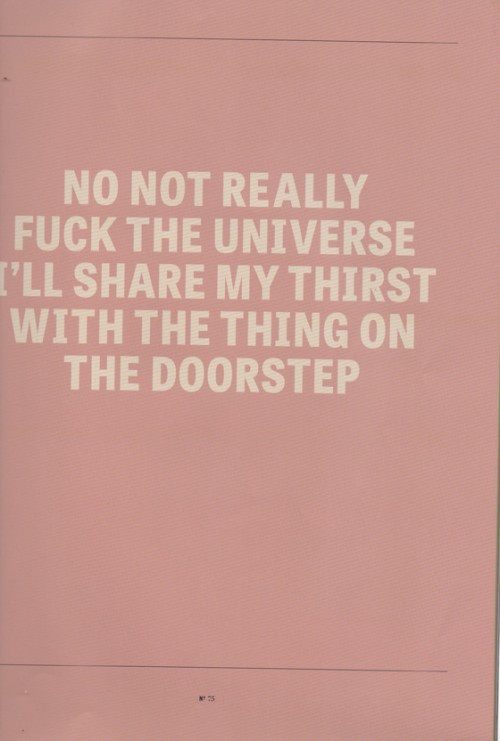
***
Tags: Fright Catalog, insert blanc press, Joseph Mosconi, Leif Haven

tinyurl.com/nc6x6hg..
tinyurl.com/l3cselt
[…] (for an excellent guide to metal songs used as source material for Fright Catalog and more, see Leif Haven’s review on HTMLGIANT). But for all the metal references, Fright Catalog looks and acts more like a high-school goth […]